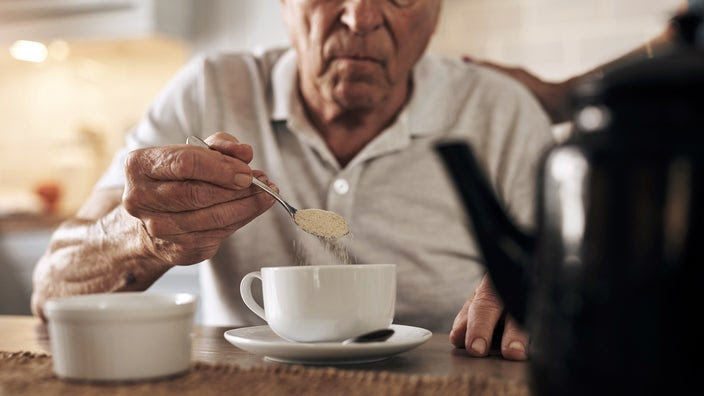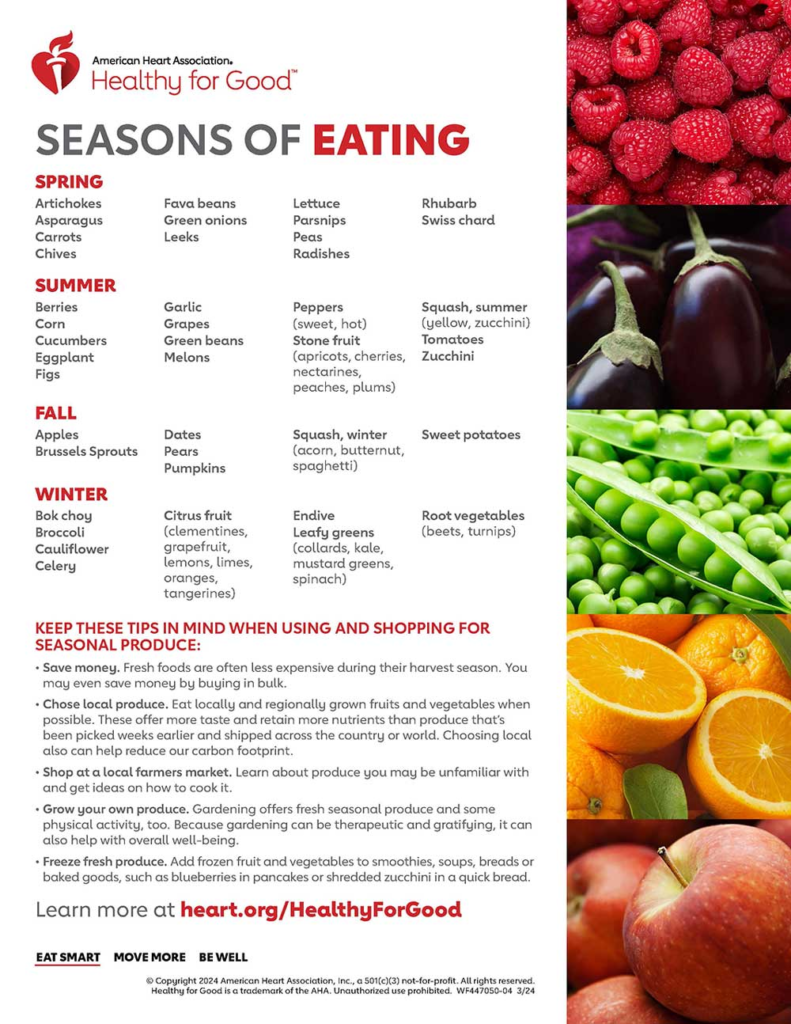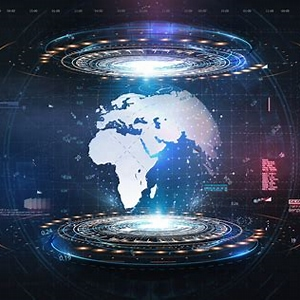
I’ve spent more than 20 years helping people develop healthy habits to live longer.
As a longevity research and regenerative medicine doctor,
Blueberries are one of the foods I eat every day to promote longevity.
They are tasty, low in calories, and filled with vitamins and antioxidants that protect your body from infection like a suit of armor.
Here’s why I consider it the holy grail of longevity-boosting foods:
1. They strengthen your cells
Antioxidants help defend healthy cells, prevent further damage, and are involved in processes that repair DNA — and blueberries have a lot of them. They are very high in antioxidants called anthocyanins, which is what makes them blue.
In addition to creating that vivid color, anthocyanins are thought to improve cognitive performance and vascular function.
2. They are great for your eyesight
One cup of blueberries contains 16% of the daily value of vitamin C, which is known to boost eye health.
Vitamin C can help prevent age-related macular degeneration and reduce cellular oxidative stress in the retina, essentially making your eyes less susceptible to decline.
3. They help with muscle recovery
Research is ongoing, but blueberries have been found to reduce muscle damage and soreness.
The vitamin C in the berries also promotes iron absorption and increases the production of collagen, the tissue that connects your bones and muscles. One cup of blueberries contains 24% of the daily value of vitamin K, which helps with building bones and blood clotting.
4. They boost your brain health
Along with physical benefits, studies have found that the antioxidants in blueberries could affect areas of your brain that are crucial for intelligence.
One study of over 16,000 people found that blueberries and strawberries were linked to delaying mental aging by up to two and a half years.
5. They reduce inflammation
Research has shown that the fiber, vitamins, minerals and antioxidants in blueberries can help reduce inflammation and additional risk factors for Type 2 diabetes and cardiovascular disease.
Blueberries also have a prebiotic effect that regulates bacteria, relieves gut inflammation, and can help to prevent colon cancer.
6. They lower cholesterol
Since blueberries are high in soluble fiber, they help to remove the bile in our gut, as well as things like fatty acids, salts, metals and bilirubin — a substance created from the breaking down of red blood cells.
This process can reduce bad cholesterol and also lower your risk of heart disease.
My favorite ways to eat blueberries
There are a number of ways to incorporate blueberries into your diet. I like adding them to salads and smoothies, snacking on them between meals, or mixing them into oatmeal.
While you’ll likely get the most from blueberries by eating them raw, and some studies show that baking and heat will lower the number of anthocyanins, consuming them in any form (like dried or frozen) will still provide benefits.
Ultimately, blueberries are one small piece of the longevity puzzle. Including them in a rich and varied diet, getting enough sleep, exercising regularly, and managing stress can all help you lead a happier, healthier and longer life.
Dr. Neil Paulvin is a longevity and regenerative medicine doctor and host of the Life Optimized podcast. As a leading expert in biohacking and human optimization, Dr. Paulvin is recognized for his exceptional work applying a hyper-personal approach to help his patients — including Fortune 500 executives, Olympic athletes and A-list celebrities — optimize their health. Follow him on YouTube and Instagram.
RELATED: What Happens to Your Body When You Eat Berries Every Day (msn.com)
This Is What Happens To Your Body If You Eat Banana Everyday (youtube.com)
The saying “an apple a day keeps the doctor away” is an old proverb that suggests eating nutritious foods like apples can contribute to good health. Apples are rich in fiber, vitamins, and antioxidants, which can support various aspects of health such as digestion, heart health, and weight management. However, it’s important to have a balanced diet and lifestyle for overall well-being. Would you like more detailed information on the health benefits of apples?
Certainly! Apples are a powerhouse of nutrition and offer a variety of health benefits.
Here’s what experts and research say about the goodness of apples:
Nutrient-Rich: Apples are packed with essential nutrients. They are a great source of fiber, which helps regulate appetite, supports a diverse gut microbiome, and can reduce blood pressure, blood sugar, and cholesterol levels1. A medium-sized apple provides calories, carbohydrates, and a significant amount of dietary fiber, along with vitamin C, copper, potassium, vitamin K, and small amounts of vitamins E, B1, and B62.
Antioxidant Properties: Apples contain dietary antioxidants such as vitamin C, which help protect the body and cells from damage. The polyphenols in apples, which are also antioxidants, are largely responsible for many of their health benefits2.
Weight Management: High in fiber and water, apples can make you feel fuller, which may prevent overeating. Studies suggest that apples can reduce body mass index (BMI) and may have anti-obesity effects due to their polyphenols2.
Heart Health: Eating apples has been linked to a lower risk of heart disease. This could be due to the soluble fiber found in apples, which is known to help lower cholesterol levels2.
Digestive Health: The insoluble fiber in apples improves intestinal transit and combats constipation. Eating apples with their skin maximizes fiber intake1.
Cancer Prevention: Research indicates that the antioxidants in apples might slow the growth of cancer cells and protect the cells in your pancreas, potentially lowering the risk of type 2 diabetes3.
Additional Benefits: Apples may also contribute to lung strength, bone health, brain health (including easing symptoms of Alzheimer’s disease and age-related memory loss), and support for the immune system3.
It’s important to note that while apples are beneficial, they should be part of a varied and balanced diet. Eating a range of fruits and vegetables will provide a wider array of nutrients and health benefits. And remember, for the best nutritional value, it’s recommended to eat apples with their skin on, as it contains half of the fiber and most of the polyphenols2. Enjoy your apples and the boost they can give to your health!
Learn more
1microsoftstart.msn.com2healthline.com3webmd.com4microsoftstart.msn.com5en.wikipedia.org

Aiming to eat a more anti-inflammatory diet to prevent disease? Jacob Fox © Provided by EatingWell
Reviewed by Dietitian Maria Laura Haddad-Garcia – Search (bing.com)
Inflammation may be a health buzzword, but an anti-inflammatory diet is more than a trend—it can help you live a healthy life and age well.
“An anti-inflammatory style of eating is very important. Inflammation is a significant contributing factor in the development of chronic medical conditions,” says Nancy Mazarin, M.S., RD, CDN, a dietitian in Long Island, New York, who offers medical nutrition therapy and weight management.
That said, it’s important to clarify the different types of inflammation. Acute inflammation, the short-term inflammation that happens as the result of, say, scraping your knee or getting sick with a cold, is a healthy and normal body response. It’s chronic inflammation that’s so insidious. “We are sending out inflammatory cells when we are not injured or sick,” says Mazarin. As a result, diseases such as arthritis, heart disease, and diabetes are all linked to inflammation. “We want to squelch the fire of chronic inflammation,” she says.
The types of eating patterns that are associated with less risk of disease also happen to be more anti-inflammatory, such as the Mediterranean diet, DASH (Dietary Approaches to Stop Hypertension) or MIND diet. While these aren’t completely plant-based, they promote consuming more plant-based foods such as fruits and vegetables, whole grains, legumes, nuts and seeds. However, just because they are more plant-based forward, doesn’t mean you have to skimp on protein or even animal-based sources. In fact, animal-protein foods also have a place in these diets.
Related video: 12 Years of Data Link Popular Diet to Brain Boost – Search (bing.com)
1. Beans
Whether you prefer black, kidney, white, cannellini, lima or pinto beans (or all of the above), beans are a top anti-inflammatory protein. For one, the pigments in colored beans (think pinto or black beans) provide anti-inflammatory antioxidant compounds that may help play a role in the prevention of cancer, heart disease, obesity and diabetes, according to a review in the journal Critical Reviews in Food Science and Nutrition in 2018.
What’s more, beans are also packed with fiber, including a specific type of fiber—known as resistant starch—that can benefit your gut health, notes a study in the journal Nutrients in 2022. That starch provides food for good gut bacteria to promote a healthy microbiome, which may also lessen inflammation, adds Mazarin. Consider whipping up Slow-Cooker Baked Beans for immune-fighting benefits.
2. Fatty Fish
Fatty fish, such as salmon, tuna or mackerel, are rich in omega-3 fatty acids, a type of fat with anti-inflammatory properties, says Mazarin. One meta-analysis, published in the journal Nutrients in 2020, on the relationship between fish consumption and heart disease looked at 40 studies. The authors concluded that each additional 20 grams of fish eaten per day (less than one ounce) was associated with a 4% lower risk of developing or dying from heart disease. That said, the authors believe that eating two ounces per day is ideal for reaping these benefits.
Why is fish so good for your health? Omega-3s improve heart and blood vessel function—and because they’re anti-inflammatory, too, say researchers. Fish is also packed with vitamin D and selenium, nutrients that have additional antioxidant and anti-inflammatory benefits. That means that eating fish may provide more benefits than simply taking an omega-3 supplement. When it comes to choosing omega-3-rich seafood on your plate, “the fattier the fish, the better,” says Mazarin. If you do not eat fish, plant sources of omega-3s include flaxseeds and chia seeds. What better way to reap these benefits than with these easy-to-make Salmon Tacos with Pineapple Salsa?
Related: Can Eating Too Many Chia Seeds Cause Side Effects?
3. Lentils
Lentils are grouped with beans because both are considered legumes, but if you’re more of a bean-eater, it’s time to add more lentils to your plate, too. Lentils are packed with polyphenols, plant compounds that have antioxidant properties that, in part, can help reduce inflammation. Consuming them may be linked to a decreased risk of diabetes, obesity, cancer and heart disease, according to a 2021 review in the Pharmaceuticals. Like beans, lentils also have prebiotic fiber to promote a healthy gut. In addition, fiber may play a direct role in reducing chronic inflammation and promoting a healthy weight, which can also keep inflammation at bay, per 2023 research in Advances in Nutrition. Not sure where to start? Try our delicious Braised Black Lentil & Quinoa Bowls.
Pictured recipe: Lentil Bowls with Fried Eggs & Greens
4. Nuts
Nuts about health: Battle hunger, heart issues, and depression with these 7 daily picks (msn.com)
It’s okay to go a little nuts. Like beans, these plant proteins also have anti-inflammatory properties, says Mazarin. Good things tend to happen when you eat nuts every day. Nuts, such as almonds and walnuts, have been found to decrease inflammation, per a 2023 review in the journal Nutrients. The authors say that nuts are packed with compounds like unsaturated fatty acids, vitamin E, selenium, copper, fiber and antioxidants that, alone and together, help counteract damaging oxidative stress and lessen inflammation. Additionally, nuts have as much protein in them as fish, egg or meat. One ounce of almonds, for example (around 23 pieces), offers six grams of protein, the same as one large egg. Sprinkle any nuts on a salad, oatmeal or yogurt bowl, or grab a handful as a snack to sneak in some extra protein.
DANGEROUS: Peanuts and Aflatoxin B1 – Search Videos (bing.com)
List of Ultraprocessed Foods That Are Most Common and Harmful (today.com)
May 9, 2024, 12:15 PM EDT / Source: TODAY
We all know that ultra processed foods aren’t the healthiest choice, but a new study has found that some can have worse effects on your health than others.
Published in The BMJ on May 8, 2024, the research followed for more than 30 years more than 100,000 people who’d never had cancer, heart disease or diabetes. The data looked at lifestyle and dietary habits, and tracked how their health changed. Study authors concluded that eating more ultra processed food led to a slightly higher risk of death, but that certain types of processed foods had an especially strong link.
Ultra Processed foods are easy to grab in the grocery store without realizing it. So what are some examples of processed foods? And how do they impact your health? Here’s what to know.
What are ultra processed foods?
Ultra Processed foods have undergone an extensive transformation of the original food and often contain only extractions of it.
A 2019 commentary in the journal Public Health Nutrition defined ultra processed foods as “industrial formulations of processed food substances (oils, fats, sugars, starch, protein isolates) that contain little or no whole food and typically include flavorings, colorings, emulsifiers, and other cosmetic additives.”
Examples include meat products like ham and hot dogs, potato chips, soda, commercial bread, candy and more.
The difference between whole, processed and ultra processed foods
Processed food, on the other hand, has undergone only some processing from its original, natural state. This could be adding salt, sugar or other additives to ensure freshness. Examples include fruit juice, refined flour, canned fish and beans, fresh bread, cheese and pre-cut fruits and vegetables.
Whole foods, as the name implies, have gone through either no or minimal processing. A key indicator of whole foods is that most to all of their nutrient density (vitamins, minerals and fiber) remains intact. Examples include steel-cut oats, whole fruits and vegetables, raw nuts and seeds, grains such as quinoa or wild rice, dry beans and legumes, fatty wild fish, lean poultry or meat, and yogurt.
What are the health effects of eating ultra processed foods?
A handful of corn chips during a football game or a store-bought cookie after dinner won’t make a huge difference in your overall health. However, when these foods become staples in your diet, research shows that adverse physical and mental health implications may arise.
In fact, one February 2024 study found that eating ultra processed foods can lead to 32 different dangerous health outcomes.
Poor mental health
A 2022 cross-sectional examination in the journal Public Health Nutrition found that individuals who consumed the greatest amount of ultra processed foods were significantly more likely to report mild depression and more anxious days per month. The authors noted that the associations with adverse mental health outcomes and ultra processed foods might be due to higher amounts of biologically active food additives and low-essential nutrients.
Another study published in the August 2023 issue of the Journal of Affective Orders found that high consumption of ultra-processed foods is associated with depressive symptoms, especially in people with obesity.
Increased risk of cancer and other fatal conditions
A 2022 study published in The BMJ found that men who ate a large amount of ultra processed foods had a 29% greater risk of colorectal cancer than those who had smaller amounts. The men with the highest ultra processed-food intake ate mostly ready-to-eat products derived from meat, poultry or fish. Another study in the BMJ found that consumption of highly processed foods was linked with higher mortality risk, especially from cardiovascular disease.
Excess ultraprocessed food consumption has also been linked to obesity, heart disease, nonalcoholic fatty liver disease and early death.
How much ultra processed food is safe to eat?
Recent research on ultra processed foods clearly shows the greater the consumption, the greater the risk. That means that occasionally having ultra processed food is not likely to lead to early death — rather, it’s when you’re eating these foods much more than nutrient-rich whole foods that it becomes a problem.
18 Most Inflammatory Foods to Limit Eating – Revised List for 2023 (youtube.com)
Timestamps  0:00 – Intro – 18 Most Inflammatory Foods in 2023 0:22 – Margarine 1:14 – Soda 2:27 – HFCS 3:34 – Rancid Fats 4:28 – Protein Powders 5:02 – Emulsifiers 6:00 – Processed Meat 7:00 – High Glycemic Cereals 7:56 – Use Code THOMAS2023 for 20% off Organifi! 9:24 – Fried Foods 9:57 – Refined Grains 10:43 – Alcohol 11:48 – MSG 13:13 – Aspartame 14:13 – Potato Chips 14:55 – Salad Dressings 15:38 – Gluten 16:53 – Excessive Salt Intake 18:14 – Swordfish
0:00 – Intro – 18 Most Inflammatory Foods in 2023 0:22 – Margarine 1:14 – Soda 2:27 – HFCS 3:34 – Rancid Fats 4:28 – Protein Powders 5:02 – Emulsifiers 6:00 – Processed Meat 7:00 – High Glycemic Cereals 7:56 – Use Code THOMAS2023 for 20% off Organifi! 9:24 – Fried Foods 9:57 – Refined Grains 10:43 – Alcohol 11:48 – MSG 13:13 – Aspartame 14:13 – Potato Chips 14:55 – Salad Dressings 15:38 – Gluten 16:53 – Excessive Salt Intake 18:14 – Swordfish
These 3 Foods Will Help Alleviate Arthritis And Joint Pain (youtube.com)
Healthiest Cereal – Most and Least Healthy Breakfast Cereals (youtube.com)
20 Healthiest Breakfast Cereals | The Picky Eater (pickyeaterblog.com)
The top anti-inflammatory foods to improve your health (msn.com)
25 Powerhouse Foods That Help Fight Inflammation (msn.com)
25 Worst Cereals to Stay Away From Right Now (eatthis.com)
The 60+ Best Foods For Anti-Inflammation (msn.com)
11 Types of Fruit That Are Low In Sugar (msn.com)
Top 20 Cancer-Fighting Foods (msn.com)
The Bottom Line
While there are many anti-inflammatory foods you can add to your rotation, focus on beans, fatty fish, lentils and nuts if you’re looking to add high-protein sources, too. Not only are these foods versatile but they all fit into a nutritious and balanced diet.
Related: Top High-Fiber Foods to Fight Inflammation
Read the original article on Eating Well.
10 Foods That Are Highly Inflammatory & 10 That Are Anti-Inflammatory (msn.com)
Choosing the healthiest oatmeal: why all flakes are not created equal (msn.com)
15 Unhealthy Foods Americans Should Stop Eating (and Why) (msn.com)
Age Gracefully: 10 Superfoods for a Stronger Immune System (msn.com)
Vegetarian, vegan diets may cut cancer risk, heart disease (msn.com)
Vegetarian, vegan diets Blood test – Search Videos (bing.com)
The top anti-inflammatory foods to improve your health (msn.com)
15 Ordinary Foods With Extraordinary Health Benefits (msn.com)
25 Powerhouse Foods That Help Fight Inflammation (msn.com)
7 Blue Zone Foods That Help Increase Longevity (msn.com)
5 Foods to Help Reduce Dementia Risk (msn.com)
Young people have every reason to be enraged, says ‘Algebra of Wealth’ author | Watch (msn.com)
Seven fermented foods you can find in the supermarket (and one of them is cheese!) (msn.com)
Avoid These 11 Foods That Are Secretly Packed With Sugar (msn.com)
From Spain to Greece: 15 Irresistible Mediterranean Recipes You Need to Try (msn.com)
Dear Abby: I’m 40 and still don’t know what I want to be when I grow up (msn.com)
Going Vegan? These 15 Tasty Recipes Will Make The Transition Easy (msn.com)
Dehydration: How it happens, what to watch out for, what steps to take (msn.com)
The Most Damaging Food for Gut Health I’ll Never Eat Again | Watch (msn.com)


/https://tf-cmsv2-smithsonianmag-media.s3.amazonaws.com/accounts/headshot/joseph-stromberg-240.jpg)



 Love the message but does anyone else see how large her pupils are? I really do believe in feeling energy…Intuition and energy are way stronger than words. 100%
Love the message but does anyone else see how large her pupils are? I really do believe in feeling energy…Intuition and energy are way stronger than words. 100% 

 That can mean different things to different people depending
That can mean different things to different people depending 







 .
.









 SHOCK REPORT: Democrats Grant Illegal Aliens Congressional Representation. House Democrats Vote UNANIMOUSLY to Give Illegal Aliens Representation in Congress
SHOCK REPORT: Democrats Grant Illegal Aliens Congressional Representation. House Democrats Vote UNANIMOUSLY to Give Illegal Aliens Representation in Congress